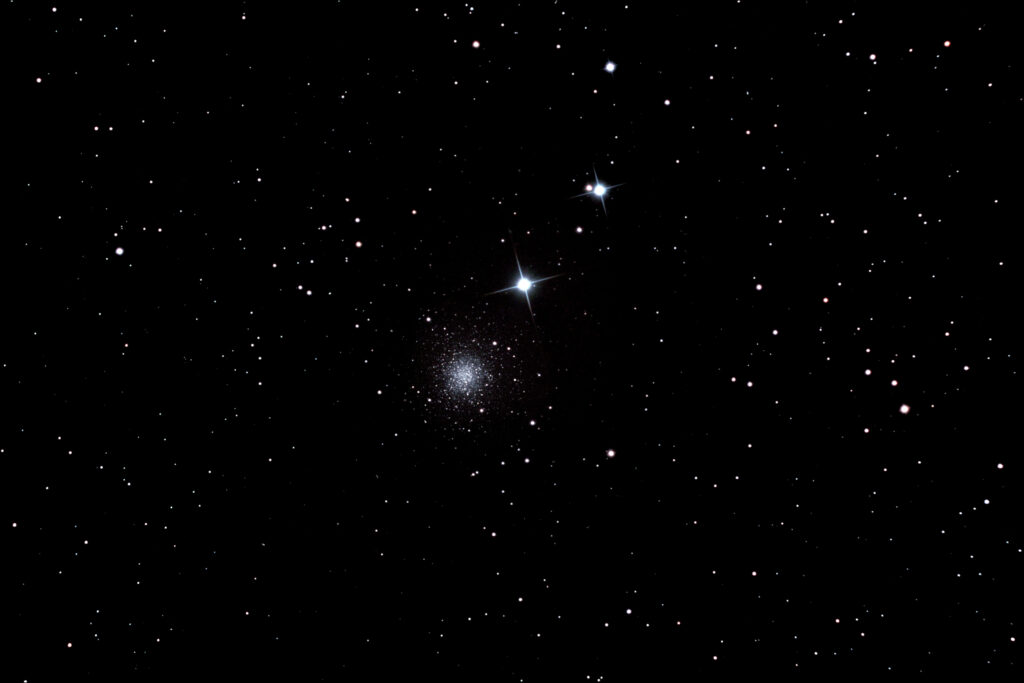This object may seem small and unimpressive, but it is one of my favorite objects in the universe. It is a remote globular cluster (a densely compacted ball of hundreds of thousands of stars) located nearly twice the distance of the nearest galaxy. In the past, some thought it was located in the void of intergalactic space, and thus its name "the intergalactic wanderer."
More recent analysis has conclusively shown that it is a remote member of our Milky Way galaxy, at a distance of nearly 300,000 light years and with an orbital period of nearly 3 billion years.
Digital sky surveys by large earth-based telescopes have detected several other remote globular clusters, of which this (and perhaps NGC7006 in Delphinus) are the most prominent.
This image was my second NASA Astronomy Picture of the Day (APOD) for January 23, 2009.
The "Intergalactic Wanderer" (NGC2419}
Date Taken:December 29, 2008
Location Taken: Conditions of Location:FWHM 2.0
Equipment Used:14.5" Ritchey-Chretien telescope, SBIG STL11000 CCD camera, Astrodon RGB filters, TCC, PIR, remote guide head used with Takahashi Sky90 for autoguiding, T-Point used for polar alignment (required for each imaging session due to my portable setup).
Processing Used:10 x 300 seconds luminance, 8 x 90 seconds RGB, guided, 1x1 binning, processed in Maxim DL and Photoshop (total exposure 1 hour 26 minutes)
Distance from Location:300,000 light years
Constellation:Lynx (the "lynx")
Other Link:NASA Astronomy Picture of the Day for January 23, 2009: http://apod.nasa.gov/apod/ap090123.html

